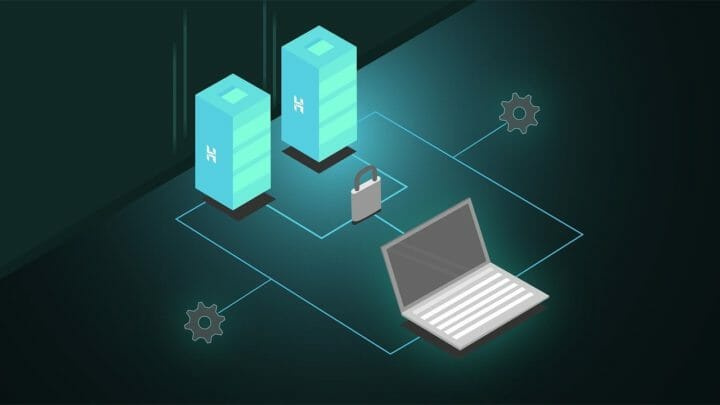
In 2001, Larry Smith coined "shift left testing" in the Dr. Dobbs Journal. He believed that the software development process depended on the early development of test cases, early testing, and test automation and often and therefore adopted the shift-left testing approach.
If you're in the software development industry, the chances are that you've experienced delays in deployment, issues with post-implementation bugs, and other challenges typically faced by a development team. The test process is often the last step in a typical software development process.
Team members look at it as the final development stage, and testers wait in the wings to start the testing cycle as soon as the software is developed. Traditionally, once the API testing kicks off, the project's life cycle is approaching its end.
The project's final leg involves integration testing, which generally means it's time to do testing and use test automation tools to ensure that the software meets functionality, performance, reliability, and security goals.
This is where it can begin to get tricky. Since each piece of software is different, it doesn't make sense to use a unified testing strategy with the same test cases for all scenarios. There is no one-size-fits-all testing strategy for operations, especially with large software systems.

"Shift-left" testing is an approach based on the premise that if software developers do continuous testing throughout the software development cycle. Continuous feedback makes discovering errors earlier and adjusting development approaches accordingly by doing incremental testing every step of the way.
The shift-left testing approach to software testing has many benefits, including:
Until recently, continuous testing was not commonly practiced. In the traditional waterfall testing model, the testing world has significant challenges that can cause unnecessary delays and software quality issues. When you test early and continuously, you can avoid so many issues.
The traditional shift-left testing process encourages the development team to work alongside the testing team to create a unified test strategy and implement systems testing early in the development cycle. It would mean that developers will write tests even before release and acceptance testing is launched.
This is achievable through an incremental development cycle. The scope of the entire software development life cycle is determined early and repeated throughout the process. The goal is to integrate testing with development through test automation with a static code analyzer early in the development cycle.
This way, you can set up continuous testing throughout the development process while the development team is still deeply entrenched in the process. With developers part of the test process, solutions are far easier to implement. This process automatically expands test coverage, which boosts software quality.

Believe it or not, it's not rocket science to figure out how the shift-left testing process can reduce (or remove!) defects in production software. With incremental shift-left testing, the development cycle has a safety net every step of the way.
Instead of manual unit testing post-development, the way testing typically happens if it's waterfall model-based, shift-left testing uses static testing. It leaves less work to do, catches bugs in the early stages of the development life cycle, and drastically increases the frequency of unit tests than expected in traditional testing.
The ultimate goal is to reduce critical bugs when the software is deployed at the end of the development phase and prevent post-development code patching.

A few decades ago, there was no difference between development teams and testers. The role of software tester hardly existed! Not to mention test automation, which was practically unknown in those early years. Software developers used to create the software, test it themselves and release it.
The concept of software testing was gradually introduced as defects in production software began hitting budgets and timelines. To tackle this challenge, software development teams started following the waterfall model, which involves a sequential software development lifecycle in this order: Design, Code, Test.
Testing teams and test coverage became an integral part of the software development life cycle. This gave birth to the rise of shift right testing, but nobody realized that this left a gap that testing earlier filled.
Note: Shift right testing is similar to using the traditional waterfall model of testing, whereby the entire program is written before testing commences.
Over time, the industry realized how vital software testing is and the impact of keeping the testing phase at the end of the software development life cycle with the waterfall model. It turned out that the longer they leave the testing phase, the more bugs cost to identify and fix.
There were even some cases where tremendous time, effort, and money were spent on developing software, only to halt release because of a critical bug discovered at the very end of the test process.
Since the waterfall model of testing resulted in huge losses when stakeholders scrapped software, it became apparent that the effort required to fix the bug at such a late stage in the development cycle far outweighed the value of the software.

The realization that testing earlier is better gave rise to a massive revolution in the IT industry. It gave birth to the shift-left approach to testing instead of other traditional testing methods.
Soon development teams across the board embraced the concept of turning the entire process into a testing phase that runs parallel to the development cycle and involves test automation to make it possible to test continuously. But, this didn't mean the end of shift right testing or that the test team would become redundant.
Shift-right testing is a method of testing software in a post-production environment instead of shifting testing left, which means testing earlier. This approach is powerful because it helps software developers discover unexpected scenarios that could only become apparent in real-life situations and couldn't be detected within a development environment.
In contrast to the shift-left testing approach, shift-right testing is on the opposite end of the spectrum. While both methods help create quality software and employ significant test coverage, the shift-left testing approach is critical.
Robust software solutions start with the shift-left testing process and end with post-production shift right testing, creating a well-balanced approach to testing. Shift right testing has been around for a long time, whereby the shift-left approach is still relatively new.
Let's explore how the shift-left strategy is applied from a practical point of view.

It's not about getting rid of the test team and making the development team test earlier. The shift-left principle supports the testers in collaborating with all stakeholders and software developers at the start of the software development cycle.
This helps them to understand requirements and design goals early, making it easier to design test cases that will effectively catch bugs and help fix potential issues as they unfold.
It is an efficient approach that requires:
The shift-left testing approach involves getting testers involved in the software development life cycle much earlier. It allows them to understand the purpose of the project, its requirements, the software design, the architecture, coding, and how it should function.
It also allows testers to ask questions to customers, developers, and business analysts. By getting clarification on functionality, testers can provide feedback and invaluable support, one of the significant benefits of shift-left testing.
With this understanding, they'll be able to:

The shift-left testing process focuses on keeping testers involved in all the development stages and involves testing continuously from the start of the project. It makes it possible to focus on defect detection and prevention and makes it easier to drive the program's business goals.
The shift-left testing approach shifts focus to the testing team and provides them with significantly more responsibility for the ultimate success of the development.
With this increased responsibility, testers are less focused on testing software to identify defects and more focused on proactively working with the entire team from the start. Being involved from the initial stages makes it easier to build an effective testing strategy, provide excellent test leadership, and guidance to the rest of the team.
The focus should be on the long-term vision of the end product, rather than just taking care of its testing. Shift-left testing enables testers to design tests geared for the customer experience, making it possible for developers to develop the software based on actual customer needs from the outset. But it doesn't just end with testers.
Throughout the process, shift-left testing also allows developers to take ownership of their code as their responsibilities on testing are increased. Combining the success achieved by test-driven development with purpose-built testing departments helps prevent software defects and lower failure rates.
Now we've established some of the many benefits of shift-left testing in testing activities, let's explore the methods of shift-left testing available.

There are four fundamental methods to shift software testing left; traditional, incremental, Agile/DevOps, and model-based shift-left testing.
The traditional method moves the focus of testing lower down (i.e., slightly left.) Instead of emphasizing system-level testing, this method is centered on unit tests and integration tests.
This shift-left testing approach relies on decomposing large, intricate systems into smaller increments called Vs. This type of shift-left approach depends on each increment being a part of the customer and operations cycle. Therefore it incrementally shifts developmental and operational testing to the left.
This method is particularly popular with complex, large software systems, particularly those that incorporate significant amounts of hardware. The transition to the incremental shift-left testing approach has primarily been completed like the traditional method.
The Agile/DevOps testing approach involves several short-duration Vs, also known as sprints. These small Vs are modified if earlier sprints are used to block out the architecture and basic requirements or if the project involves test-driven development.
The shift-left approach happens when the earlier Vs to the left correspond with the larger Vs on the right. This method is limited to developmental testing and excludes testing once the system is released into operation. The transition to the Agile/DevOps left testing approach is a popular method.
The previous methods all focused on beginning the software early on in the software development life cycle. If you wait until the software already exists before you start testing, it limits the usefulness of static testing to uncover defects in the code.
This delay is particularly ineffective because so many defects are typically introduced during the discovery phase when requirements, architecture, and design are determined.

No matter which method they choose, the traditional shift-left testing approach involves three fundamental factors: testing at an earlier stage and using test automation. Here are some key factors to note when the test team employs a 'test early', shift-left strategy:
From the beginning of the project initiation, the testers should be involved to develop the integration alongside the rest of the team and business stakeholders.
Test team members should work with Business and Operations to clarify requirements and provide a clear view of the test process as it advances.
All parties involved should interact throughout the project and develop a unified testing strategy and robust test automation strategy to build an effective test data management plan with robust unit tests.
Part of taking on responsibility for testing activities is to provide test leadership and guidance to the rest of the team. It's essential to keep the long-term product vision in mind.
Clearly and accurately defining requirements is critical to the success of any project. During the planning phase, the testers have to analyze and review all requirements with improved clarity, cohesion, completeness, testability, ambiguity, and acceptance criteria definition in mind.
Testing has to understand dependencies and implementation strategy well enough to bring out real examples that illustrate program features. This should bring clarity on any missing requirements that have to be addressed.
The testers will understand the product architecture and identify flaws by attending design review meetings. This way, they'll know how to identify loopholes and create test scenarios with critical test data accordingly.
Test team members should carry out static testing early in the software development life cycle and provide feedback on critical requirements. Static testing at an early stage prevents defects from becoming integrated into the software at an early stage.
The testing phase is only as robust as the test scenarios created for it. The test scenarios must identify as many defects as possible during the initial static testing phase. This way, it is easier to prevent significant defects as the project development ends.
The goal is to use the scenarios to complete the project incrementally with continuous unit tests and not draw it out.

Testing left is the future. In a nutshell, the traditional shift-left testing process is about earlier testing and using test automation. It creates better and more efficient results and higher-quality software. Finding defects early in the process will reduce the project's cost, especially if it relies on test automation.
The ultimate focus is customer-centric. It's all about taking care of customer requirements and improving the customer experience. The shift-left testing approach brought massive transformation to the industry and the tester's role.
Until this shift happened, the primary focus of the test team was to detect defects using the traditional waterfall model during the software development life cycle to perform unit tests at the end of development.
Now, teams are seeing the benefits of shift-left testing and are more inclined to lean to the left side. They now test continuously with the goal of early defect detection and defect prevention. It speeds up delivery and drastically improves the quality of your software.
